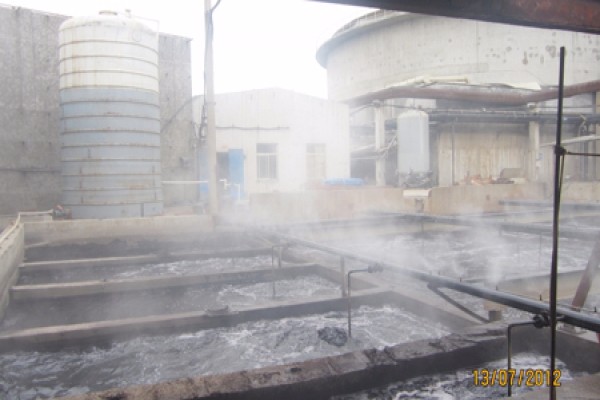Several Ecological Restoration Technologies for Urban River Management
With the development of the economy, many domestic sewage and industrial wastewater containing pollutants are discharged into the river, polluting the water environment of the river, damaging the river ecosystem, and ultimately leading to black and odorous rivers. Based on the characteristics of black and odorous rivers, the following ecological restoration skills are mainly used to regulate the river channel natural ecological water purification system .
Ecological restoration skills for urban river channels (black and odorous streams)
1. Chemical precipitation method
Add flocculants and coagulants to water, allowing it to undergo direct physical adsorption and chemical reactions with pollutants in the water, generating insoluble colloidal precipitates that separate and remove pollutants. However, due to the common need to add a lot of chemical agents in chemical methods, it is easy to bring about secondary pollution, which is not a cure for the root cause.
2. River dredging
In order to remove endogenous pollution from the sediment, engineering methods are generally used to dredge and clear the black and odorous rivers. This skill is a powerful technique for dealing with black and odorous rivers, but due to high engineering costs, it needs to be used according to actual situations.

3. Flow making and aeration skills
Black and odorous rivers are generally sections with poor fluidity and are in low oxygen conditions. In order to enhance the fluidity of water and improve dissolved oxygen in water, flow making or aeration can be arranged to adhere to water circulation and flow, and improve dissolved oxygen in water through exchange between the upper and lower layers of the water.
4. Ecological floating bed skills
The ecological floating bed skill is to use artificial floating bodies, plant aquatic plants on top, purify the water, and inhibit the growth of algae. The use of plant roots provides an excellent growth environment for microorganisms and creates a synergistic effect of clean water. This skill has a simple operation, low price, and obvious effect, and has been widely used.
5. Microbial water skills
The core microbial community selected for microbial clean water includes photosynthetic bacteria, nitrifying bacteria, spore forming bacteria, yeast, actinomycetes, etc. It is mainly enriched and selected from the treated river water and sediment, relying on indigenous microorganisms to form microbial agents with strong resistance to organic pollution through complex domestication of microorganisms. This skill can enhance the microorganisms in clean water, ultimately achieving the effect of sustainable ecological clean water.
Dealing with ecological problems through ecological methods
Build a balanced and circular ecosystem through plants, microorganisms, and beneficial biological communities to address issues such as eutrophication and odor. Following the principles of nature, using ecological methods to address ecological issues, creating a long-term, clear, beautiful, and vivid natural water landscape, achieving true water ecological balance, and maintaining it at a very low cost.
Using plant roots to absorb pollutants such as nitrogen and phosphorus in water
The photosynthesis of plants brings oxygen to water bodies
The root system of plants constitutes an outstanding microenvironment, which is conducive to the enrichment of beneficial microbial communities
The article originates from natural ecological water purification systems http://www.scneng.com.hk
-
06-11
"Environmental Doctor" Du Siyuan: Environmental Protection is a Lifestyle Attitude
There is a Hong Kong compatriot in Jiangmen who often frequents various farms and plantations, walks in mechanical factories, and is seen by others as the nemesis of environmental problems. He conside
-
03-16
Deodorant manufacturer: Deodorants reduce soil pollution
Waste is a chaotic mixture of various components. The accumulation of debris on the surface of soil can cause some chemical reactions, releasing harmful gases, which can lead to soil pollution and eve
-
12-01
Deodorant Manufacturers: Differences between Microbial Deodorants and Traditional Deodorants
The waste that is not needed in our daily life and work is called waste. Due to the large amount of waste discharged and the complex categories, there are great difficulties in reducing waste and deod
-
11-08
Application of Deodorant Manufacturers in Domestic Waste Treatment
Garbage is the waste generated in everyone's daily life and work. Due to its large discharge volume and complex and diverse composition, it poses great difficulties in reducing and deodorizing wa
